
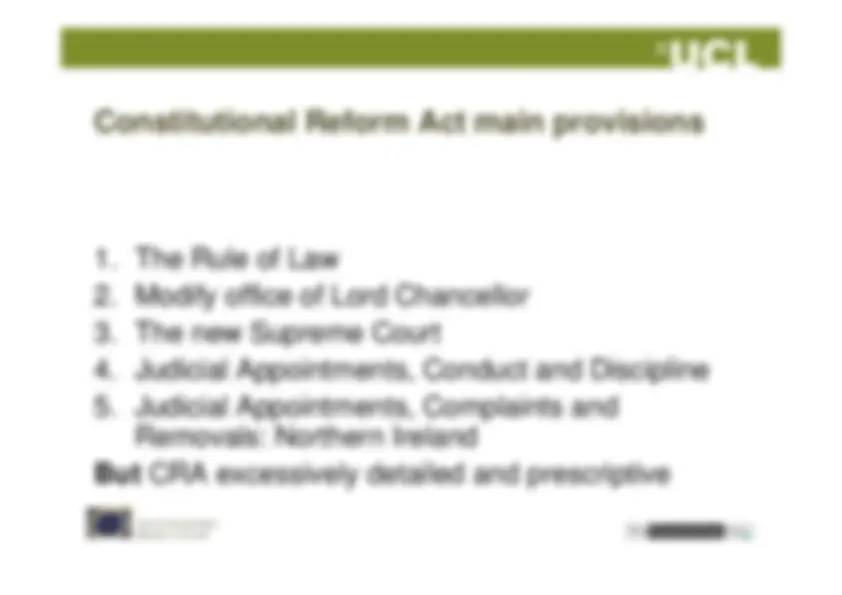
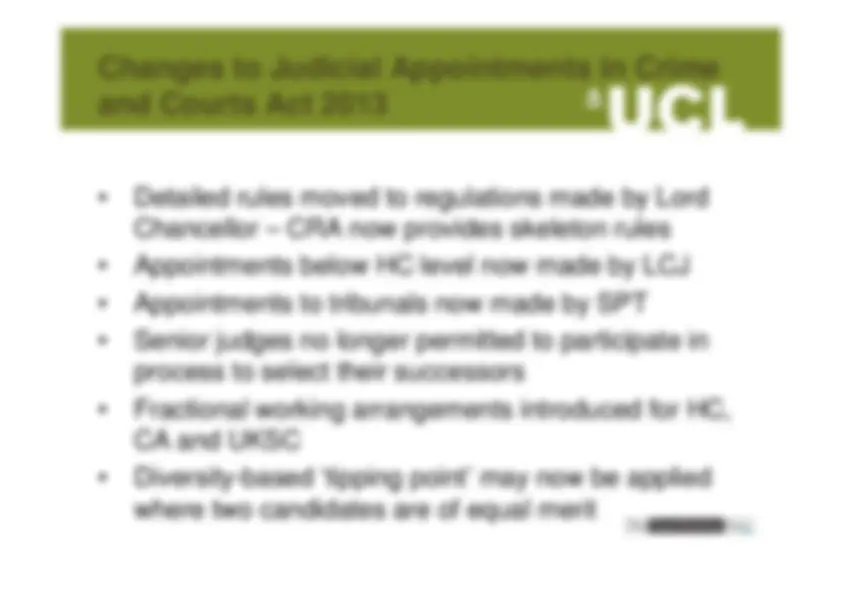
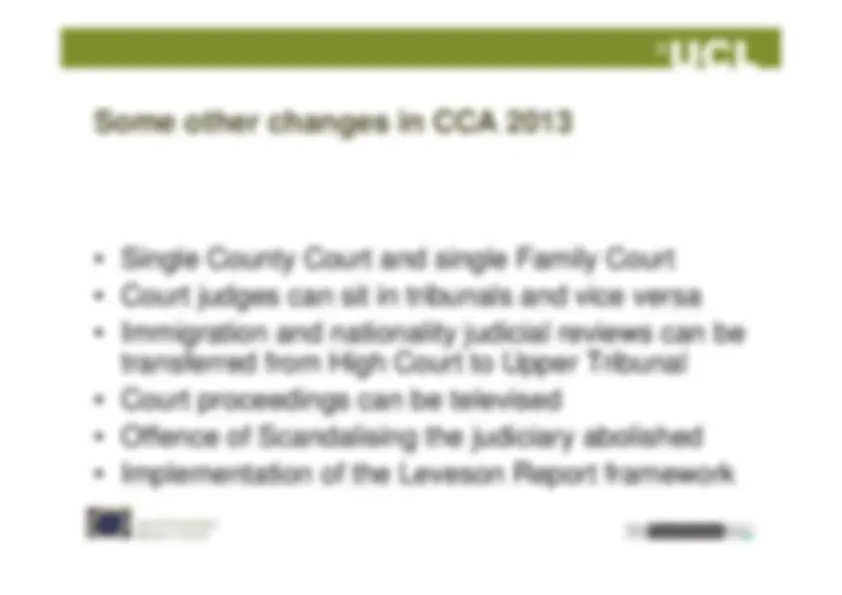
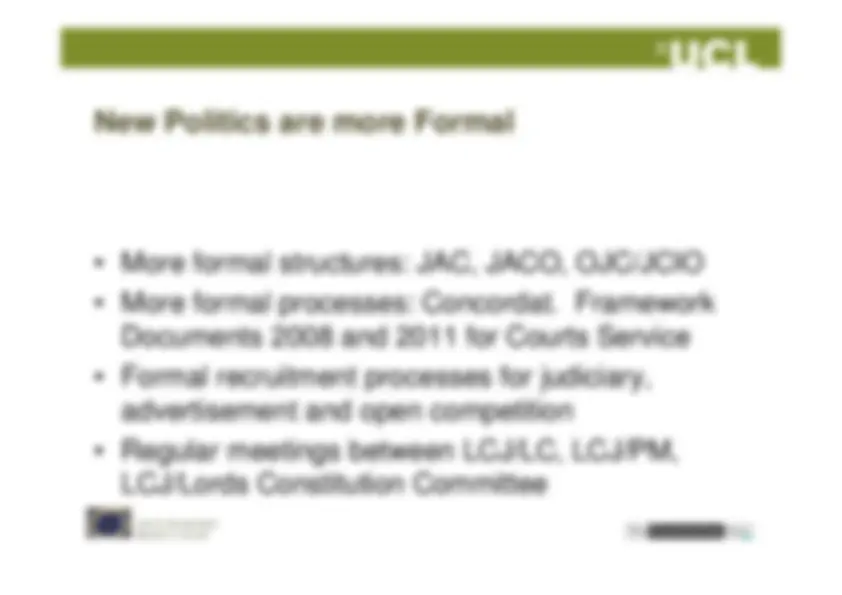
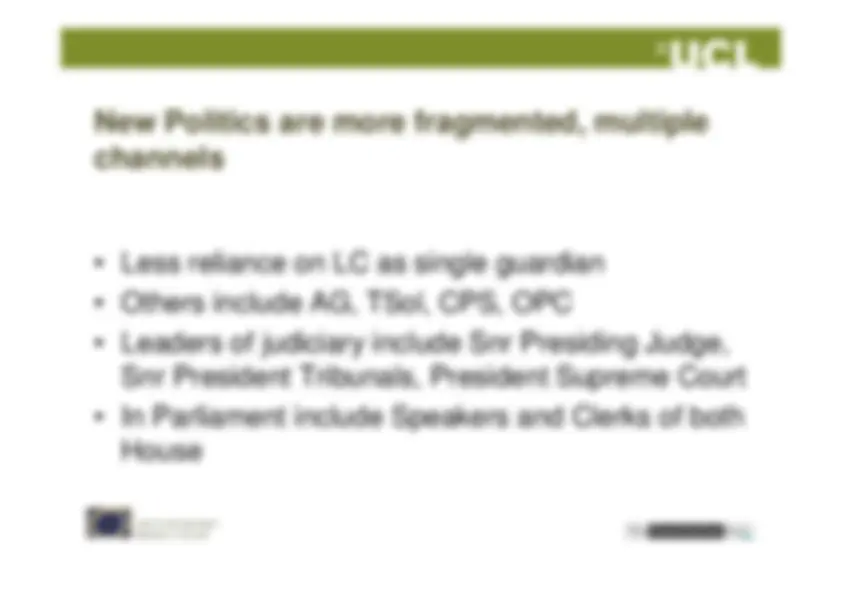
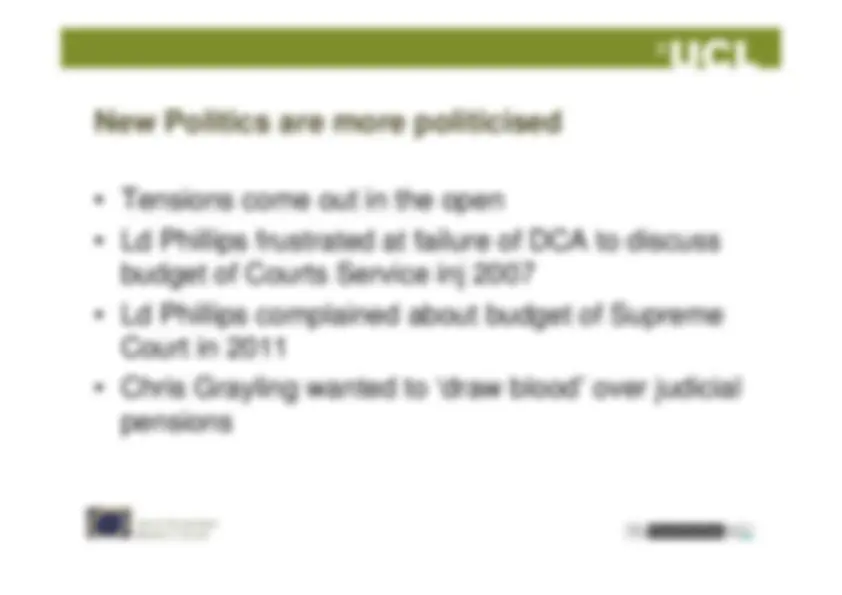
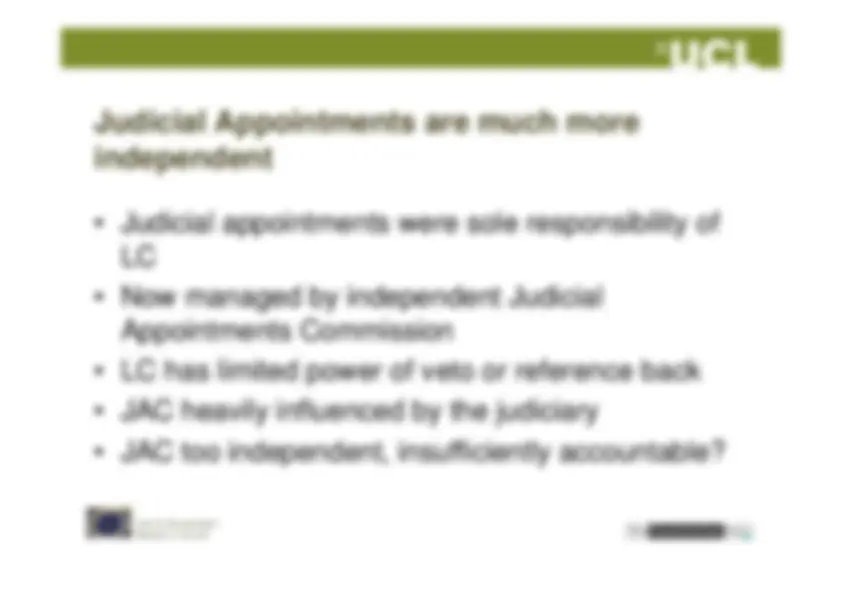
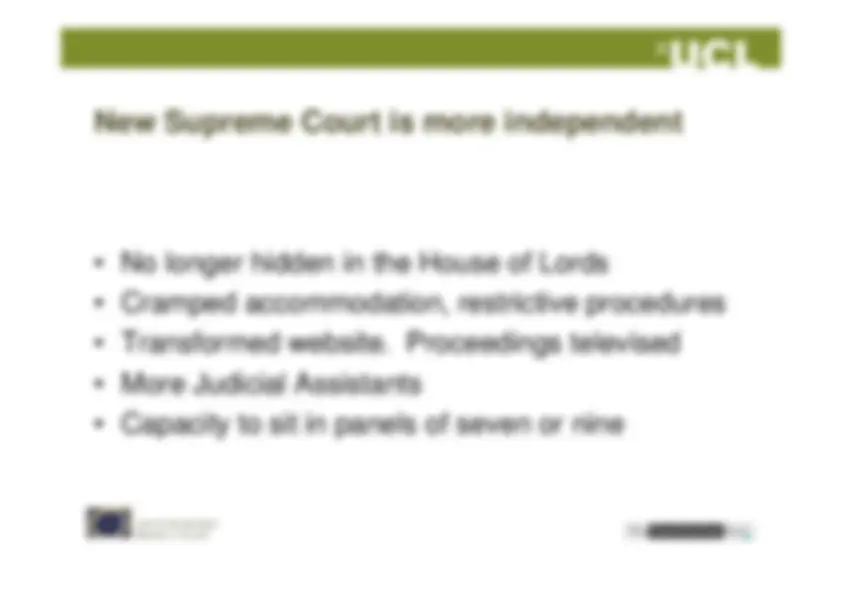
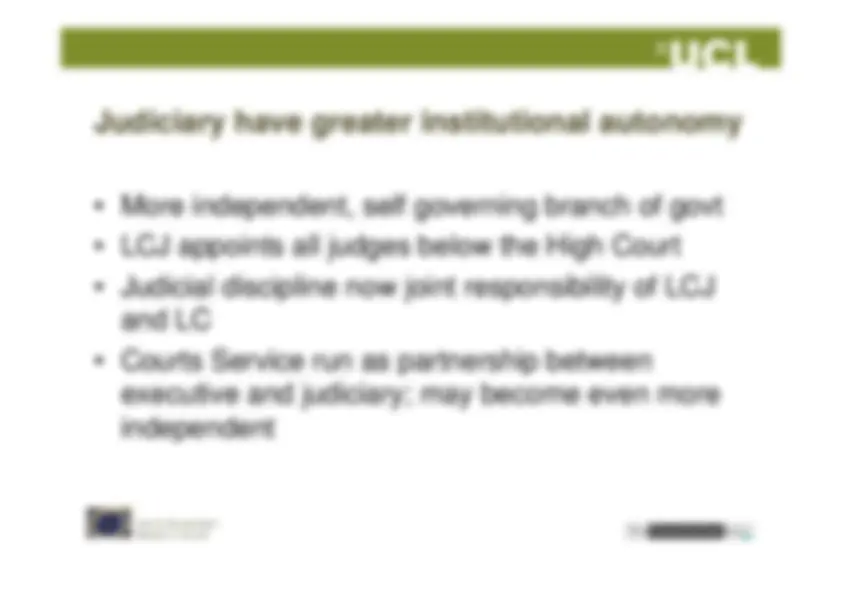
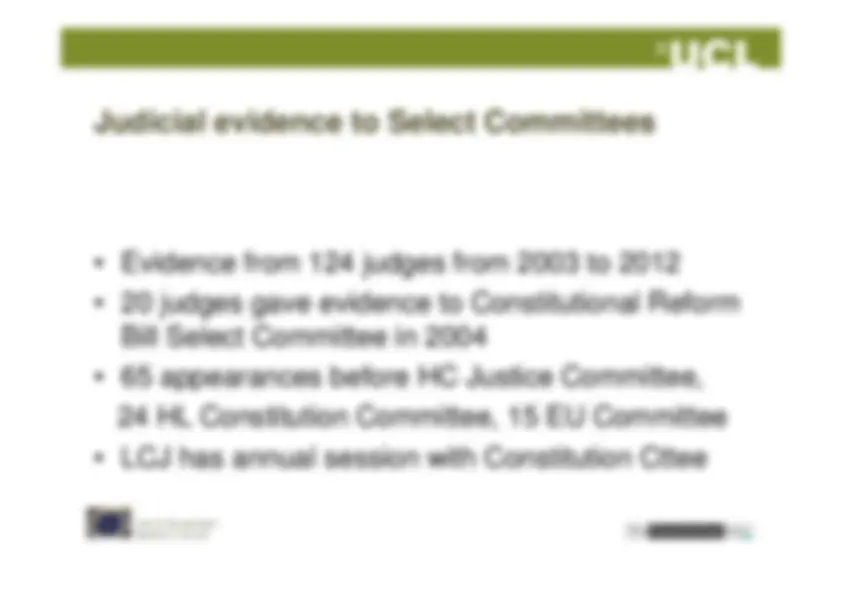


Study with the several resources on Docsity

Earn points by helping other students or get them with a premium plan


Prepare for your exams
Study with the several resources on Docsity

Earn points to download
Earn points by helping other students or get them with a premium plan
Community
Ask the community for help and clear up your study doubts
Discover the best universities in your country according to Docsity users
Free resources
Download our free guides on studying techniques, anxiety management strategies, and thesis advice from Docsity tutors
This document, presented by Professor Robert Hazell at the Statute Law Society Conference in 2013, discusses the origins of the Constitutional Reform Act 2005, its main provisions, and the consequences it had on the political landscape, judicial appointments, and the independence of the judiciary. The document also touches upon the changes brought by the Act to the Court system and the role of the Lord Chancellor.
Typology: Study notes
1 / 18

This page cannot be seen from the preview
Don't miss anything!











Professor Robert Hazell
Constitution Unit, Dept of Political Science, UCL
Statute Law Society Conference
15 November 2013
Attempted abolition of LC shocked the judges
-^
Lord Woolf stays in office to negotiate Concordatwith Lord Falconer
-^
Concordat is detailed White Paper forConstitutional Reform Bill
-^
CR Bill referred to Select Cttee in House of Lords
-^
LC is saved, rest of bill largely unamended
Detailed rules moved to regulations made by LordChancellor – CRA now provides skeleton rules
-^
Appointments below HC level now made by LCJ
-^
Appointments to tribunals now made by SPT
-^
Senior judges no longer permitted to participate inprocess to select their successors
-^
Fractional working arrangements introduced for HC,CA and UKSC
-^
Diversity-based ‘tipping point’ may now be appliedwhere two candidates are of equal merit
Single County Court and single Family Court
-^
Court judges can sit in tribunals and vice versa
-^
Immigration and nationality judicial reviews can betransferred from High Court to Upper Tribunal
-^
Court proceedings can be televised
-^
Offence of Scandalising the judiciary abolished
-^
Implementation of the Leveson Report framework
Informal
-^
Closed
-^
Secretive
-^
Conservative
-^
Stable
-^
New politics are different in every respect
More formal structures: JAC, JACO, OJC/JCIO
-^
More formal processes: Concordat. FrameworkDocuments 2008 and 2011 for Courts Service
-^
Formal recruitment processes for judiciary,advertisement and open competition
-^
Regular meetings between LCJ/LC, LCJ/PM,LCJ/Lords Constitution Committee
Tensions come out in the open
-^
Ld Phillips frustrated at failure of DCA to discussbudget of Courts Service inj 2007
-^
Ld Phillips complained about budget of SupremeCourt in 2011
-^
Chris Grayling wanted to ‘draw blood’ over judicialpensions
Judges still in mourning for the old LC, their voicein Cabinet
-^
But judiciary are institutionally more independentof the executive, and the legislature
-^
Have greater autonomy and responsibility forrunning judicial system, and the courts
-^
Multiple guardians of judicial independenceinstead of single LC
Judicial appointments were sole responsibility ofLC
-^
Now managed by independent JudicialAppointments Commission
-^
LC has limited power of veto or reference back
-^
JAC heavily influenced by the judiciary
-^
JAC too independent, insufficiently accountable?
No longer hidden in the House of Lords
-^
Cramped accommodation, restrictive procedures
-^
Transformed website. Proceedings televised
-^
More Judicial Assistants
-^
Capacity to sit in panels of seven or nine
LC is non lawyer, mid career politician
-^
Economic crisis of 2007
-^
20 per cent cuts in Courts funding, more to come
-^
Freeze on judicial salaries
-^
Reductions in judicial pensions
Wider transparency initiatives in government applyalso to judiciary
-^
Annual reports of HMCTS, UKSC, SPT, JAC,JACO, OJC
-^
Periodic reviews from LCJ. Patchy reporting fromdifferent parts of courts system
-^
Frequent appearances before parliamentarycommittees